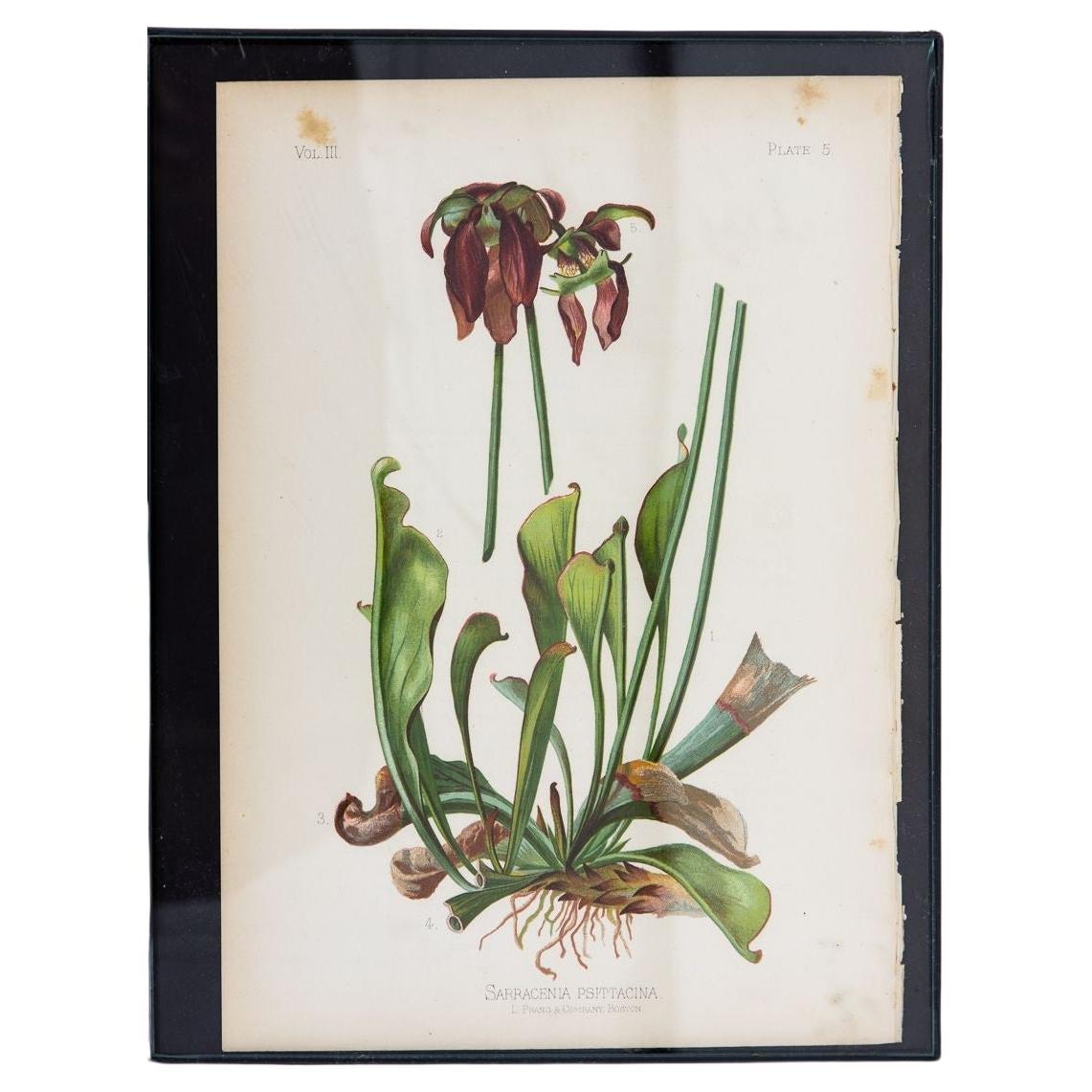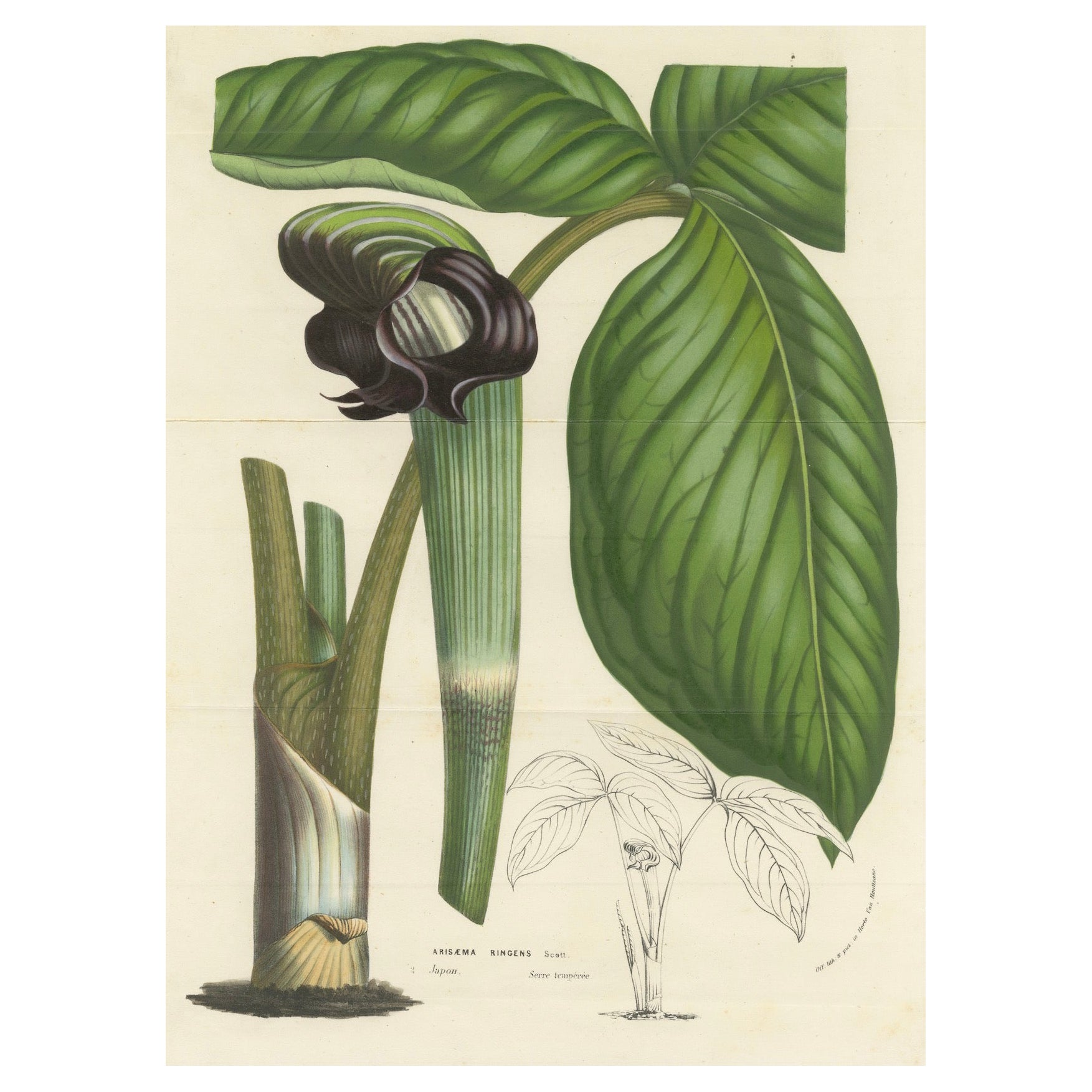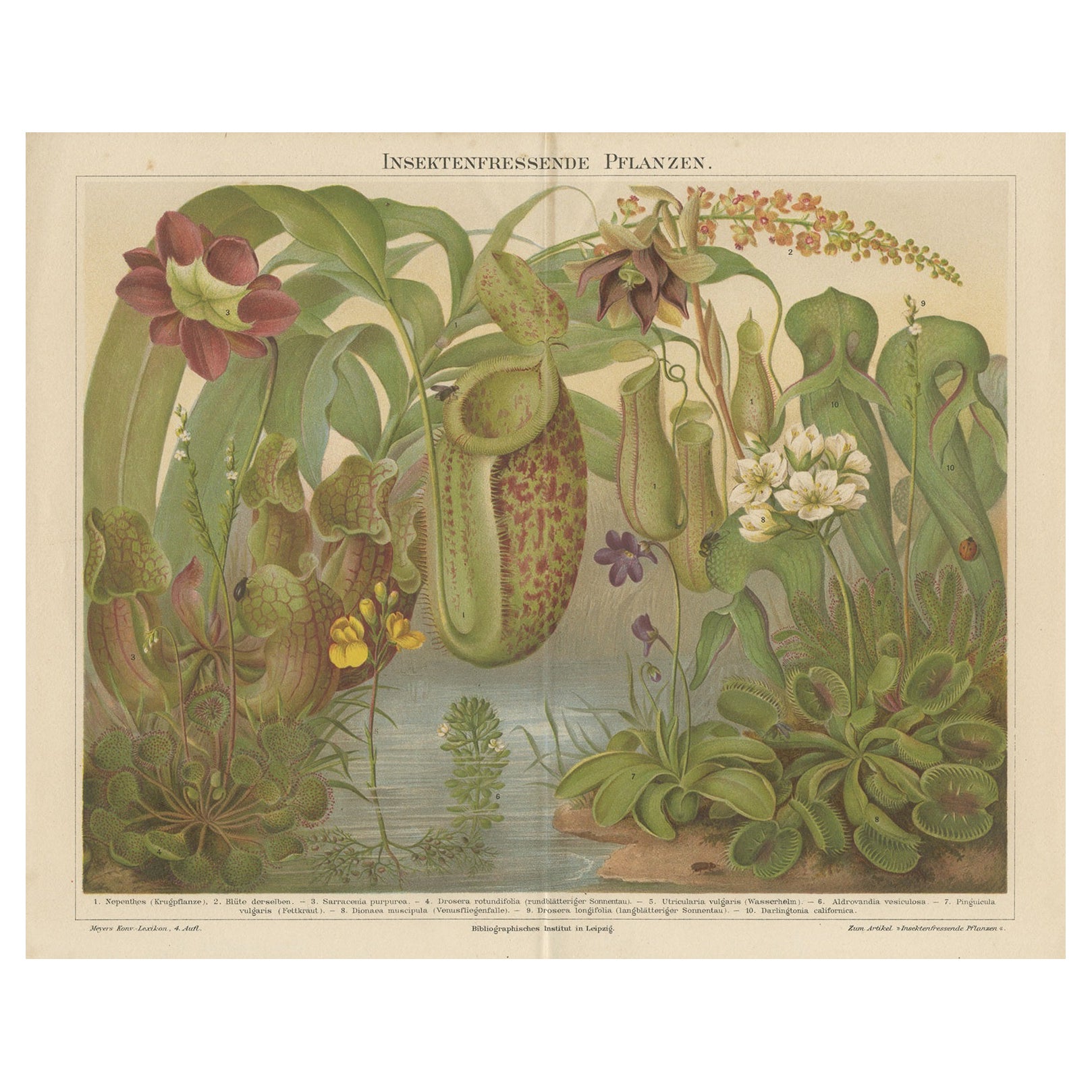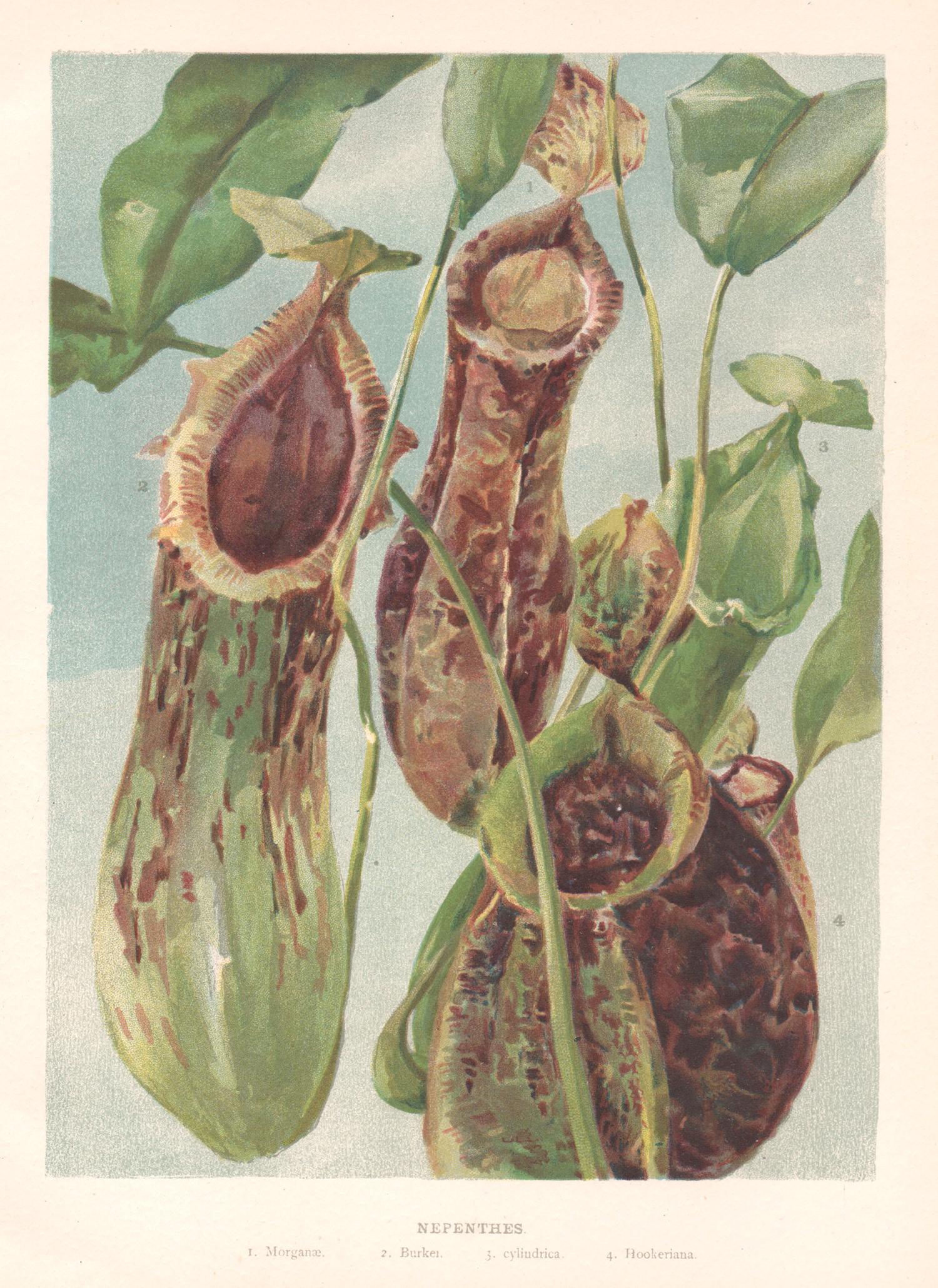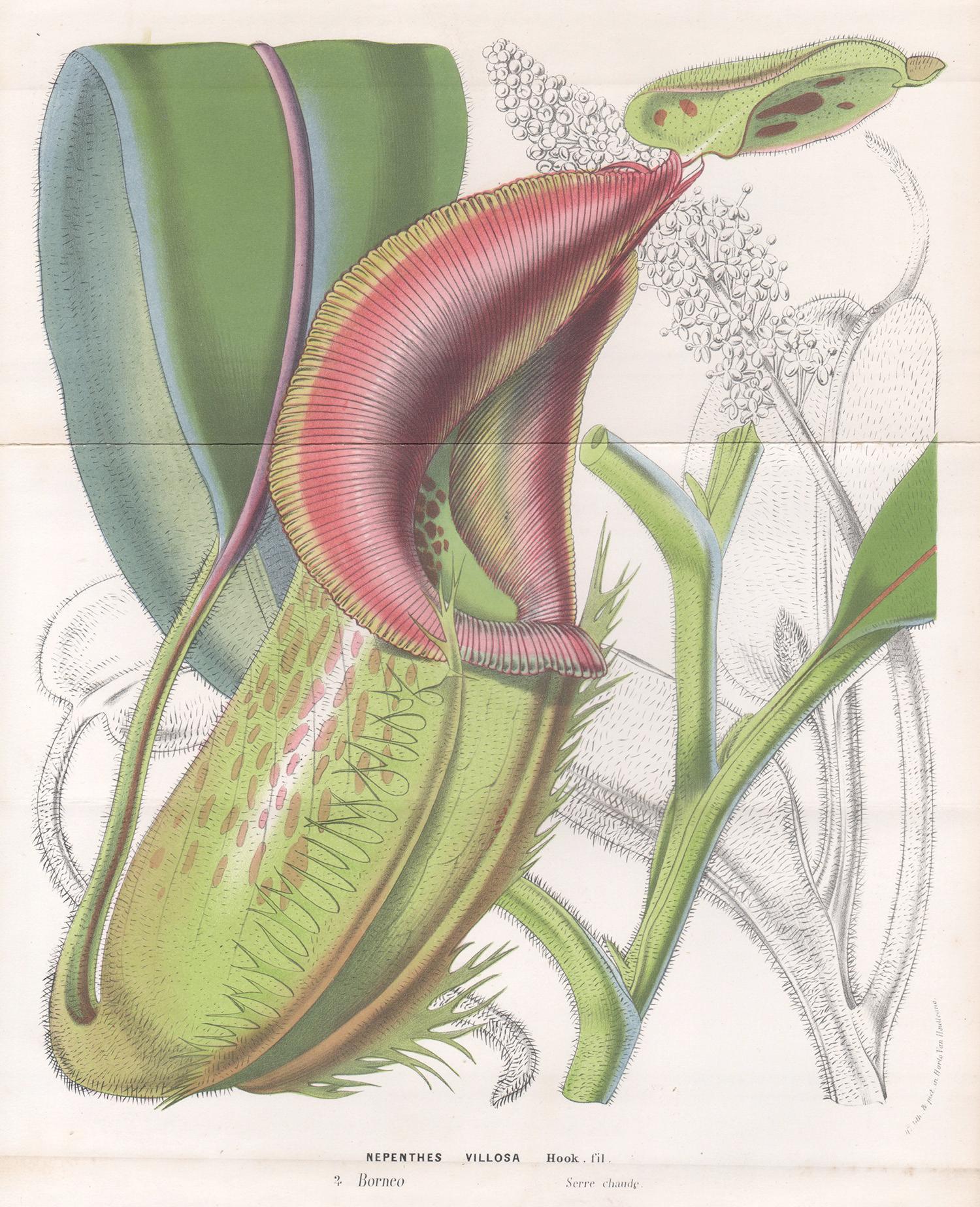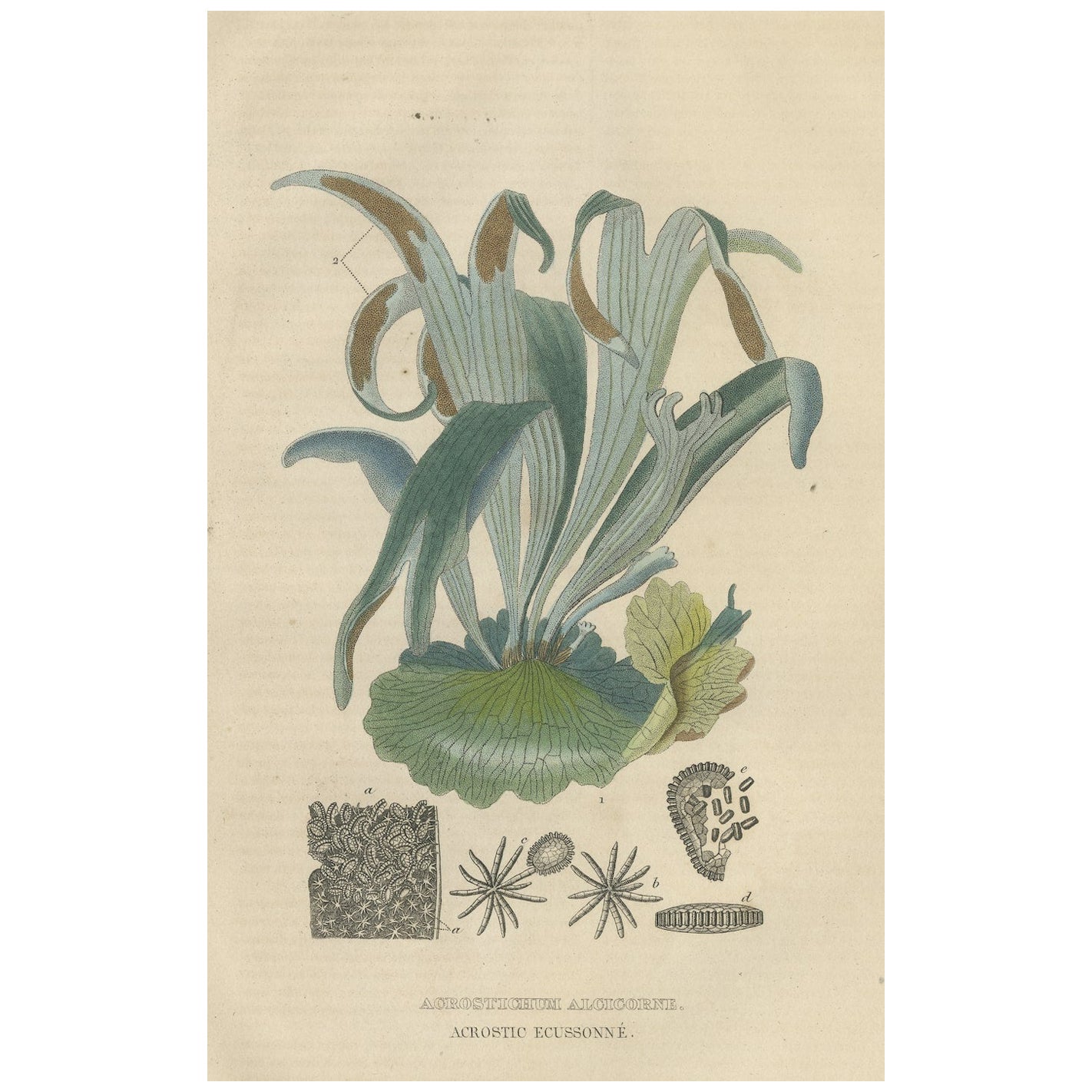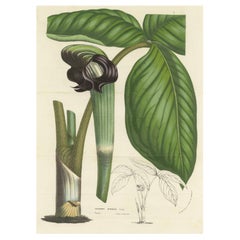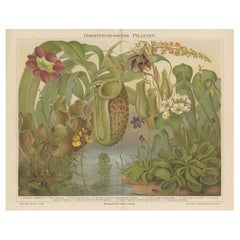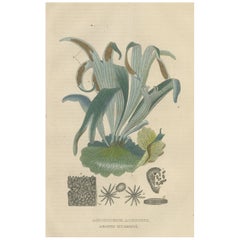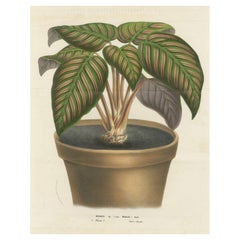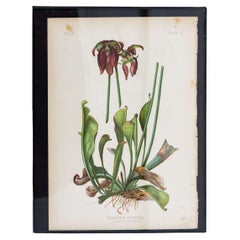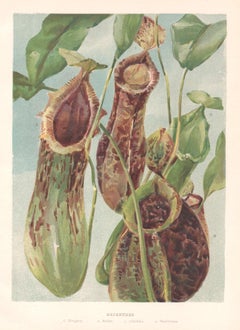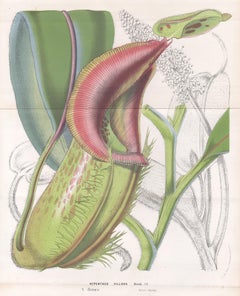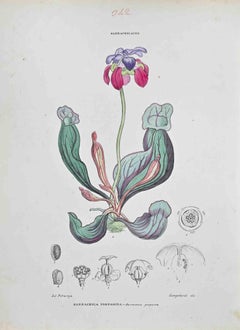Items Similar to Drummond's Pitcher Plant: Hand-Colored Lithograph by Louis van Houtte, 1855
Want more images or videos?
Request additional images or videos from the seller
1 of 6
Drummond's Pitcher Plant: Hand-Colored Lithograph by Louis van Houtte, 1855
$229.90
$287.3820% Off
£169.95
£212.4320% Off
€192
€24020% Off
CA$312.68
CA$390.8520% Off
A$350.36
A$437.9520% Off
CHF 182.37
CHF 227.9720% Off
MX$4,286.07
MX$5,357.5920% Off
NOK 2,314.90
NOK 2,893.6220% Off
SEK 2,186.39
SEK 2,732.9920% Off
DKK 1,461.99
DKK 1,827.4820% Off
Shipping
Retrieving quote...The 1stDibs Promise:
Authenticity Guarantee,
Money-Back Guarantee,
24-Hour Cancellation
About the Item
This hand-colored lithograph illustrates *Sarracenia drummondii*, commonly known as Drummond's Pitcher Plant, and is part of Louis van Houtte’s *Flore des Serres et des Jardins de l'Europe*, published between 1854 and 1855.
The *Sarracenia* genus is known for its striking, carnivorous plants, which use tubular leaves to trap and digest insects. This particular species, native to Florida, displays beautifully veined, bright green leaves with intricate white and dark green markings, resembling delicate lacework. The plant's characteristic pitcher-shaped leaves are shown in great detail, emphasizing their unique function. Below the pitchers, the large, drooping flowers are depicted in shades of deep red and burgundy, adding a dramatic contrast to the green foliage.
The lithograph is skillfully hand-colored, capturing the complexity of the plant’s structure and the richness of its colors. Like other prints in the collection, it has a central fold due to its original binding in Van Houtte’s volumes. Despite this, the artwork remains a vivid and scientifically accurate representation of one of the most fascinating carnivorous plants.
Louis van Houtte (1810–1876) was a significant 19th-century Belgian horticulturist and nurseryman, playing a pivotal role in the advancement of botanical gardens and plant collecting throughout Europe. His nursery and botanical publications left a lasting impact on the world of horticulture.
Van Houtte began his professional life working in commerce, but after spending time in Brazil and France, he shifted his focus to horticulture. His experiences abroad, especially in Brazil, ignited his passion for exotic plants, which became central to his work.
In 1839, he established a horticultural nursery in Ghent, Belgium, which eventually grew to be the largest in Europe. The nursery spanned several acres and specialized in growing and distributing rare and exotic plants. Van Houtte’s vast knowledge of plants, combined with his ability to source them from around the globe, made his nursery a key destination for botanists and collectors.
Van Houtte is most famous for founding and publishing *Flore des Serres et des Jardins de l'Europe* (Flowers of the Greenhouses and Gardens of Europe), a celebrated horticultural journal that was published from 1845 to 1883. The publication was known for its beautifully hand-colored lithographs, which featured a wide variety of plants. To achieve this, Van Houtte collaborated with talented botanical artists such as Pieter de Pannemaeker and François Stroobant, producing detailed and vibrant illustrations that were highly regarded for their accuracy and beauty.
In order to expand his collection of plants, Van Houtte employed plant collectors who traveled to far-flung regions, including South America, Asia, and Africa. These collectors brought back many exotic species, such as orchids, palms, and other rare flowering plants, which were then documented and illustrated in *Flore des Serres*.
Van Houtte’s nursery became a central hub for introducing and popularizing new plant species in Europe, contributing to the widespread cultivation of exotic plants in gardens and conservatories. His work greatly influenced the ornamental horticulture movement of the Victorian era, particularly among Europe’s upper class, who were fascinated by the beauty and rarity of these exotic species.
In addition to his horticultural pursuits, Van Houtte also played a role in civic affairs. He served as the director of the Ghent Botanic Garden and held key positions within various Belgian horticultural societies. His expertise and contributions earned him significant recognition, and he became a leading figure in the horticultural community of his time.
After his death in 1876, Van Houtte’s legacy endured through his nursery and the continued appreciation of *Flore des Serres*. His contribution to the introduction and documentation of exotic plants has left a lasting mark on horticulture, and his work continues to be revered for both its scientific and artistic value.
Louis van Houtte's work represents an important era in European horticulture, marked by a combination of botanical exploration, artistic excellence, and a deep appreciation for the beauty of plants. His publications remain some of the finest examples of 19th-century botanical art and knowledge.
- Dimensions:Height: 13 in (33 cm)Width: 9.65 in (24.5 cm)Depth: 0 in (0.02 mm)
- Materials and Techniques:
- Period:
- Date of Manufacture:1855
- Condition:The condition of this genuine antique is good, given age, with the central fold line being a characteristic of its original publication. General age-related toning and/or occasional minor defects from handling.
- Seller Location:Langweer, NL
- Reference Number:Seller: BG-13748-621stDibs: LU3054341539532
About the Seller
5.0
Recognized Seller
These prestigious sellers are industry leaders and represent the highest echelon for item quality and design.
Platinum Seller
Premium sellers with a 4.7+ rating and 24-hour response times
Established in 2009
1stDibs seller since 2017
2,494 sales on 1stDibs
Typical response time: 1 hour
- ShippingRetrieving quote...Shipping from: Langweer, Netherlands
- Return Policy
Authenticity Guarantee
In the unlikely event there’s an issue with an item’s authenticity, contact us within 1 year for a full refund. DetailsMoney-Back Guarantee
If your item is not as described, is damaged in transit, or does not arrive, contact us within 7 days for a full refund. Details24-Hour Cancellation
You have a 24-hour grace period in which to reconsider your purchase, with no questions asked.Vetted Professional Sellers
Our world-class sellers must adhere to strict standards for service and quality, maintaining the integrity of our listings.Price-Match Guarantee
If you find that a seller listed the same item for a lower price elsewhere, we’ll match it.Trusted Global Delivery
Our best-in-class carrier network provides specialized shipping options worldwide, including custom delivery.More From This Seller
View AllCobra Lily: Hand-Colored Lithograph by Louis van Houtte, 1855
Located in Langweer, NL
This lithograph depicts Arisaema ringens, commonly known as the Cobra Lily. It is a hand-colored botanical illustration from Louis van Houtte's *Flore des Serres et des Jardins de l'...
Category
Antique 1850s Prints
Materials
Paper
$229 Sale Price
20% Off
Original Antique Lithograph of Various Carnivorous Plants, circa 1890
Located in Langweer, NL
Antique print titled 'Insektenfressende Pflanzen'. Original old lithograph of various carnivorous plants. This print originates from 'Meyers Konversations-Lexikon'. Published circa 1...
Category
Antique Late 19th Century Prints
Materials
Paper
$86 Sale Price
20% Off
The Golden Leather Fern - An Antique Masterpiece of Botanical Illustration, 1845
Located in Langweer, NL
An antique botanical engraving of the Acrostichum Aureum, also known as the Golden Leather Fern, though the text "Acrostic ecussonne" may ...
Category
Antique 1840s Prints
Materials
Paper
$172 Sale Price
20% Off
Free Shipping
Regal Prayer Plant: Hand-Colored Lithograph by Louis van Houtte, 1855
Located in Langweer, NL
Maranta Regalis: A Hand-Colored Lithograph from Louis van Houtte's Flore des Serres et des Jardins de l'Europe (1854-1855)
This hand-colored lithograph, created between 1854 and 185...
Category
Antique 1850s Prints
Materials
Paper
$229 Sale Price
20% Off
Antique Botanical Print of the Sarracenia Flava or Yellow Pitcherplant
Located in Langweer, NL
Antique botanical print titled 'Sarracenia Flava'. Original old print of the sarracenia flava, the yellow pitcherplant, a carnivorous plant in the family Sarraceniaceae. This print o...
Category
Antique Mid-19th Century Prints
Materials
Paper
$182 Sale Price
20% Off
Lithograph of Heterotropa Asaroides from 1854-1855 by Louis van Houtte
Located in Langweer, NL
Lithograph of Heterotropa Asaroides from 1854-1855 by Louis van Houtte
This exquisite lithograph, measuring 24 x 16 cm (9.5 x 6.5 inches), depicts the plant Heterotropa Asaroides, k...
Category
Antique 1850s Prints
Materials
Paper
$134 Sale Price
20% Off
You May Also Like
Parrot-Headed Pitcher Plant Botanical Print on Paper, USA Early 20th C.
Located in South Salem, NY
A color print of a Parrot-Headed Pitcher Plant on paper. This print captures the essence of the native to the US blooming plant of the northern landscape with delicate finesse. In th...
Category
Early 20th Century American Prints
Materials
Paper
Nepenthes, English antique carnivorous plant botanical chromolithograph, 1896
Located in Melbourne, Victoria
'Nepenthes'
(Tropical Pitcher Plant)
Plants are numbered with a key to the varieties below the image.
Antique English botanical chromolithograph.
Category
Late 19th Century Naturalistic Still-life Prints
Materials
Lithograph
Nepenthes Villosa, antique botanical carnivorous pitcher plant lithograph print
Located in Melbourne, Victoria
'Nepenthes Villosa Hook. fil.'
Botanical lithograph with original hand-colouring of a carnivorous pitcher plant, native to Borneo. 1858.
Category
Mid-19th Century Naturalistic Still-life Prints
Materials
Lithograph
Sarracenia Porporina - Lithograph by Vincenzo Tenore - 1870s
Located in Roma, IT
Lithograph hand watercolored.
Plate from "Atlante di Botanica popolare ossia Illustrazione di Piante Notevoli di ogni famiglia" (Atlas of popular botany or illustration of notable p...
Category
1870s Modern Figurative Prints
Materials
Lithograph
Ferns - Platycerium Alcicorne, antique fern botanical colour woodblock print
Located in Melbourne, Victoria
Antique 19th century fern colour woodblock by Benjamin Fawcett after AF Lydon. From Edward J. Lowe’s 'Ferns: British and Exotic', 1867.
Accompanied by a sheet of descriptive text.
...
Category
Mid-19th Century Naturalistic Still-life Prints
Materials
Lithograph
Set of Three Antique Botanical Fern Prints by Anne Pratt, Hand-Colored, 1855
Located in Fukuoka, JP
A beautiful pair of original hand-colored lithographs by Anne Pratt, one of the most beloved botanical illustrators of the Victorian era. Published in 1855 as part of her celebrated ...
Category
Antique 19th Century British Prints
Materials
Paper
More Ways To Browse
Antique Drummond
Revere Pitcher
English Iron Bed
Franz Xavier Bergman
Frem Rojle Chair
French Confit Jar
French Opaline Bottle
French Soda
Garden Rabbit
German Cigarette Case
Gio Ponti Display Cabinet
Glass Door Etagere
Glass Ginger Jar
Goat Skin Parchment
Goryeo Celadon
Granite Buddha
Gun Cabinet
Hand Painted Music Boxes
